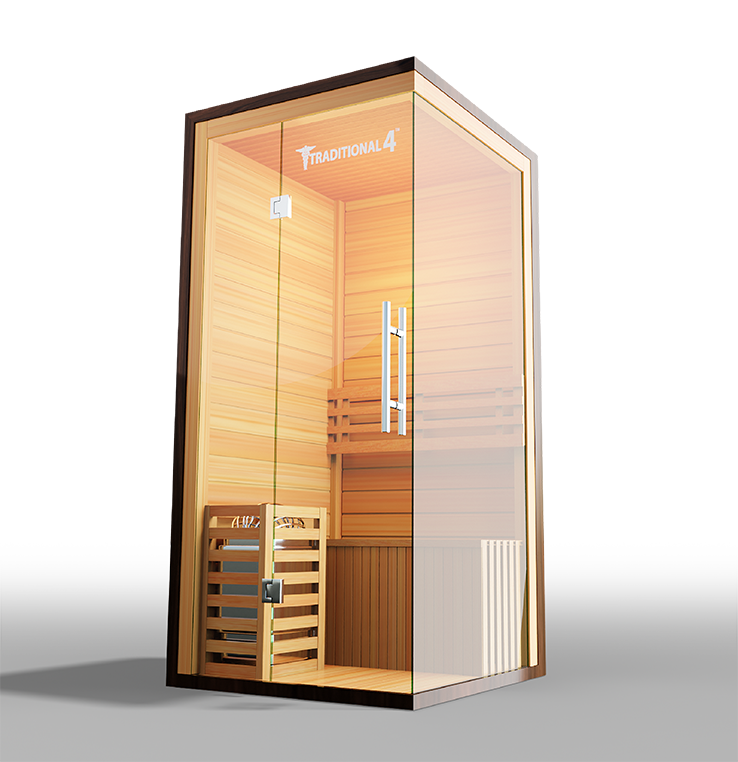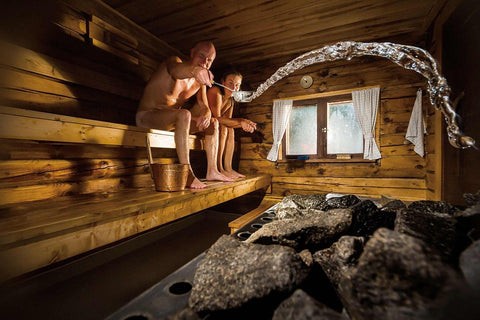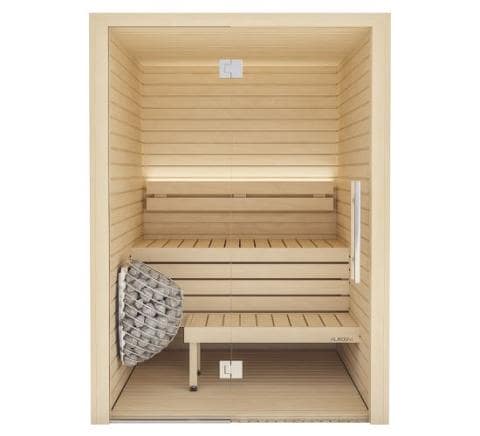The Definitive Guide to Traditional Sauna
The Definitive Guide to Traditional Sauna
Blog Article
Not known Facts About Traditional Sauna
Table of ContentsAbout Traditional SaunaThe 10-Second Trick For Traditional SaunaThe smart Trick of Traditional Sauna That Nobody is Talking AboutThe Only Guide to Traditional SaunaThe Ultimate Guide To Traditional Sauna
Many of the weight shed in a sauna is water loss and is re-gained upon rehydrating. Without a doubt sauna can be an essential part of a healthy weight loss program. To take a look at the differences between conventional and IR saunas, I will separate these into verifiable, academic, and made distinctions.Hence, the best factor in the saunawhich is at the ceiling directly over the sauna heateris typically between 185 and 190 F. Claims that a traditional sauna exceeds 200 F is simply not real and not applicable for electrical saunas offered in the United States. The temperature for a far-infrared sauna is typically established in between 120 and 140 F; however, unlike the conventional sauna, the goal in and IR room is not to attain a heat.

When a conventional sauna has actually been correctly heated up, the sauna wall surfaces are cozy, the air temperature has achieved set temperature level and the rocks are super heated. As an interesting side note, the warmed wall surfaces and the rocks are discharging far-infrared heat, incorporated with the heated air, to create an "wrapping up warm".
Indicators on Traditional Sauna You Should Know
When the heat is accomplished, the aspects cycle on and off to keep the high temperature level. The majority of standard sauna customers enjoy pouring water over the rocks to produce heavy steam to elevate sauna moisture degrees. The benefits of putting water over the rocks include: making the space more comfy, moistening the nasal flows, and allowing the use of aromatherapy by mixing important oils with the water.

When the power goes into the body, it triggers the body temperature to enhance and ultimately results in perspiration. In an infrared sauna it is very important for the emitters/heaters to remain on almost constantly. Since there is no mass of rocks to retain warmth, the sauna will certainly cool down if the emitters turned off.
The Greatest Guide To Traditional Sauna
As stated over, the sauna bather in an infrared space intends to place himself in front of running emitters to get optimal benefit from the heat. The home heating time for the two areas can be extremely various, depending upon how the areas are used. For a traditional sauna, a bather needs to allow 30-40 mins for the room to attain a desired temperature level and to correctly pre-heat the rocks.

A well constructed sauna will usually accomplish a temperature level of 150-160 F in about 30-40 minutes. For hotter temperatures, the space might need to warmth for a longer period.
To some, 15 minutes was "thrown away" while the infrared power heated the wood panels instead than heating up a body, while others discover a pre-heated room my company to be extra comfy and think a raised beginning temperature level is necessary to start sweating. The length of suggested use for every space is around the exact same (10-15 minutes per session); nevertheless, because of the lower air Home Page temperatures and the ability to feel the effects of infrared heat faster than a traditional sauna, it is not uncommon for an individual to invest a total amount of 20-30 mins in an infrared sauna.
How Traditional Sauna can Save You Time, Stress, and Money.

The ordinary cost per kWH of electrical energy in the united state is about $0.11, so a 4.5 kW heating unit will certainly set you back approximately $.50 to compete one hour, if the heating system runs continuously for one hour. Normally a sauna heating system will run for 75% of the very first hour and 50% of succeeding hours on since the elements cycle once the set temperature more information level is attained.
A 2 individual far-infrared room is typically physically smaller sized than a typical sauna, frequently regarding 4' x 4' or smaller sized. The IR heating unit is commonly 1.5-1.7 kW using a 120 volt 15 amp plug-in service. Because the space can be utilized quicker than a sauna space, we will assume the room is utilized for to of an hour including warm up time.
Ultimately, there is a hardly ever gone over distinction in the social experience in between both areas. While our society has actually shed several of the social advantage of the standard sauna experience, it can be extremely socially satisfying (Traditional Sauna). From household time in the sauna, to heart-felt discussions with better halves, to sauna partiesthe standard sauna experience can cause intimate interacting socially
Traditional Sauna Things To Know Before You Buy
The majority of higher end infrared areas include tinted light therapy, noise systems and full-glass fronts.
Report this page